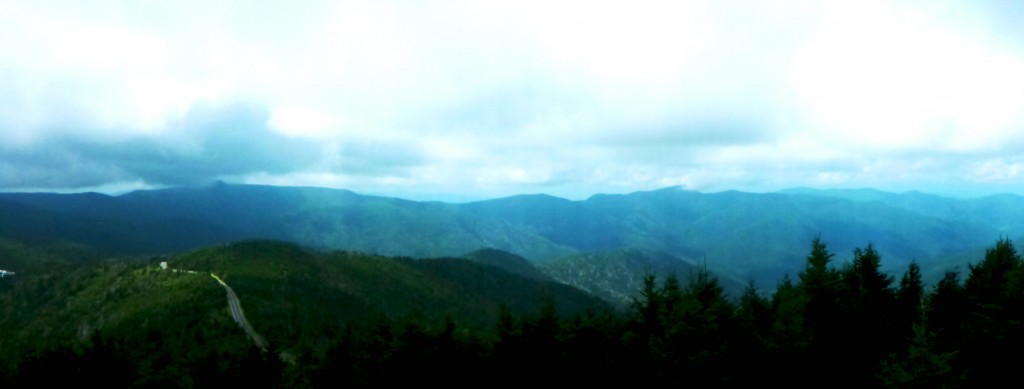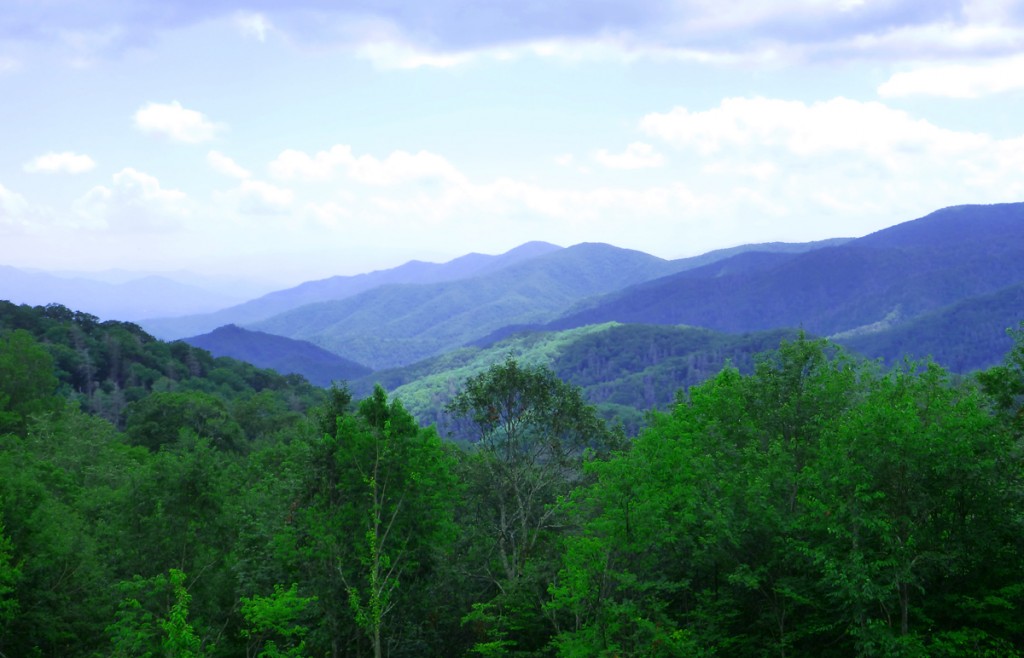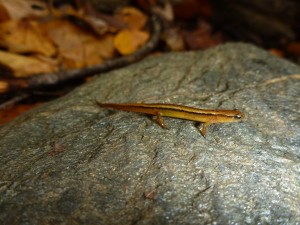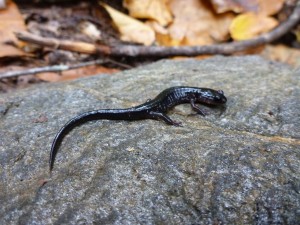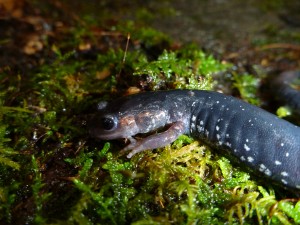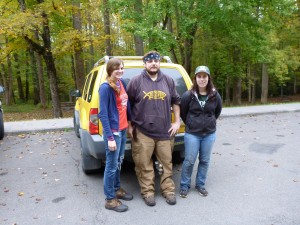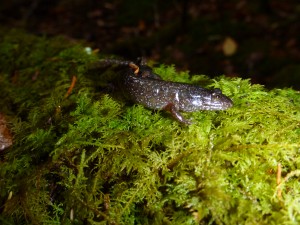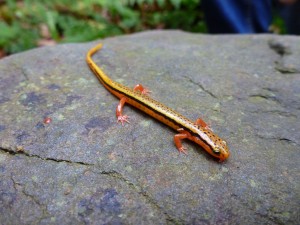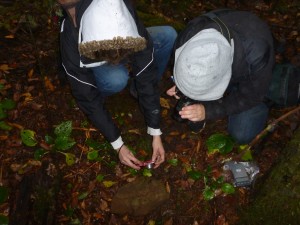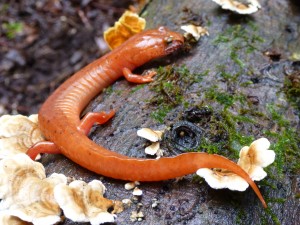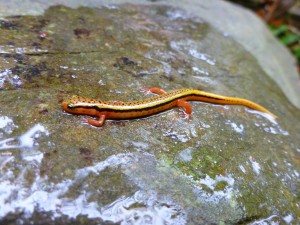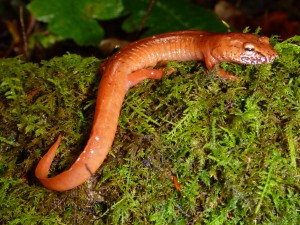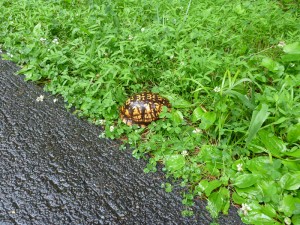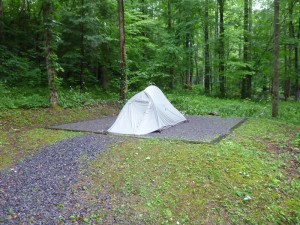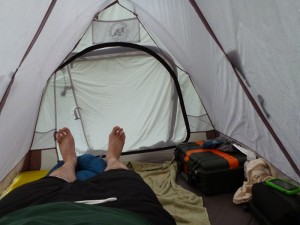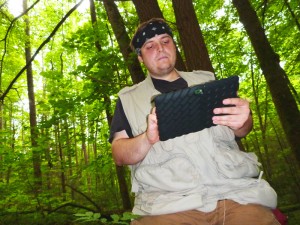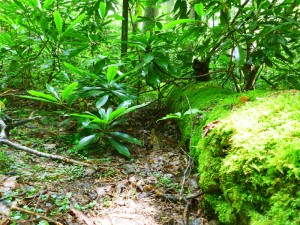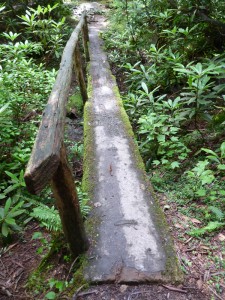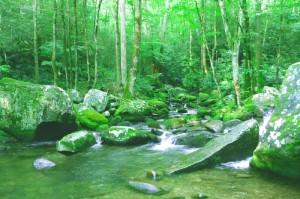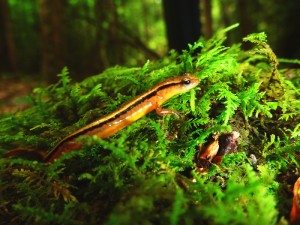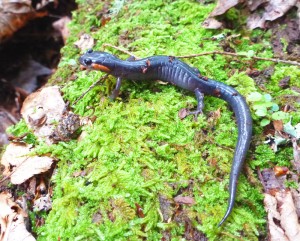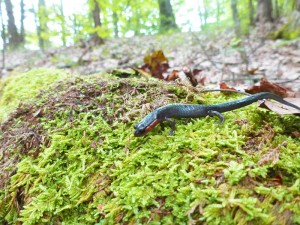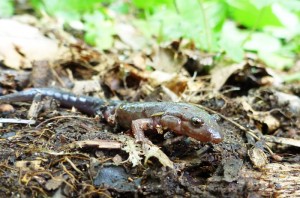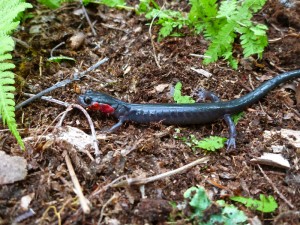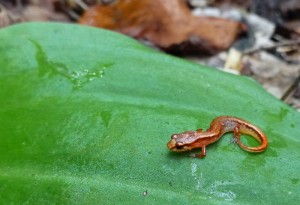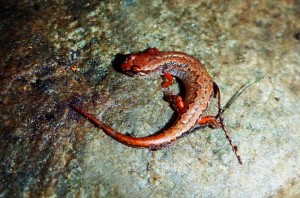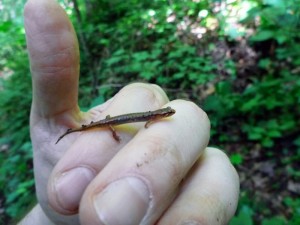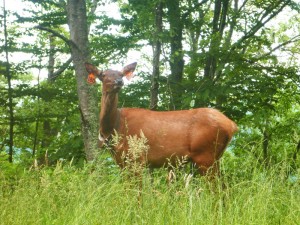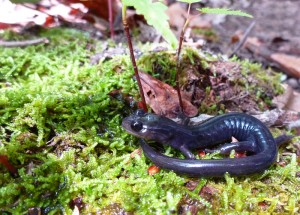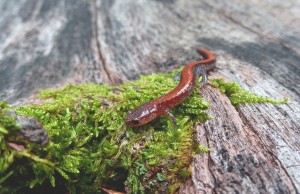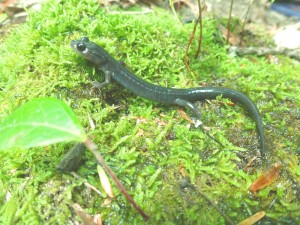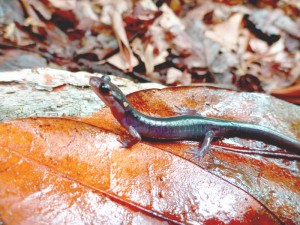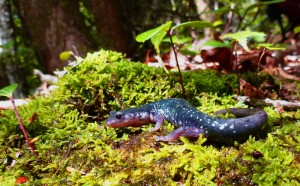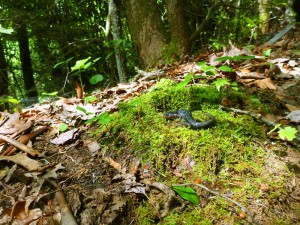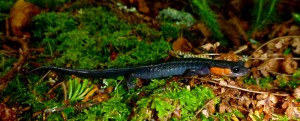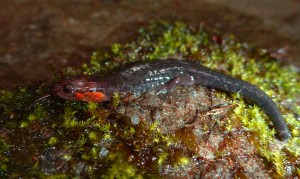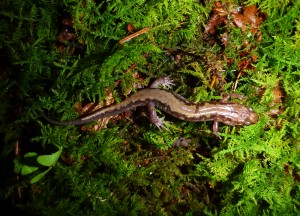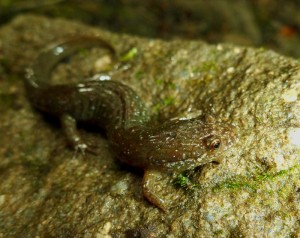AUGUST 2012
First off, this is long over due. As soon as I returned from this trip I had to get ready for my next trip to the west coast for the World Congress of Herpetology (post to come later) hence the delay in my final summer field work update.
Round two of 2012 field work started on July 16th at the Peaks of Otter Campsite off of the Blue Ridge Parkway in Virginia. I was lucky enough to have the assistance of the wonderful Kaili Boarman during this stretch of work. This trip was a long sprint, bouncing from field site to field site. We did not stay at any site more than 2 days and we typically moved every day to a different campsite. Quick outline of the schedule:
- July 16th – 18th: Peaks of Otter and Rocky Knob, Blue Ridge Parkway National Park, Virginia
- July 18th – 19th: Cherokee National Forest, Tennessee
- July 20th – 21st: Pisgah National Forest, North Carolina
- July 22nd – 26th: Great Smoky Mountains National Park, Tennessee/North Carolina
There were three primary goals for this trips:1) place data loggers along the Blue Ridge Parkway and in the Great Smoky Mountains, 2) collect more preliminary data, and 3) scout new field sites for next season.
The first part of the trip was a blast from the past as I had visited these sites 6 years ago on a John Carroll herpetology class field trip. My main goal was to find the Peaks of Otter salamander (Plethodon hubrichti).
However, I did not realize until too late that the Peaks of Otter salamander is primarily found in areas adjacent to the Blue Ridge Parkway. We were able to find a few species in micro-habitat plots such as this red spotted newt (Notophthalmus viridescens) and a two-lined salamander (Eurycea cirrigera), but the Peaks of Otter salamander evaded us. We did however see a pretty cool moth outside the bathroom of the campsite.
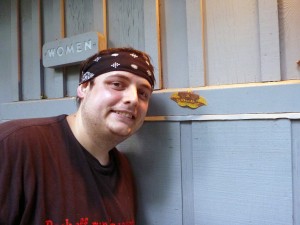
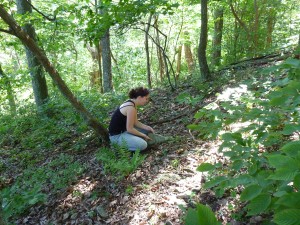
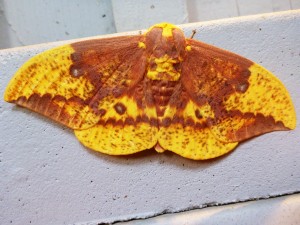
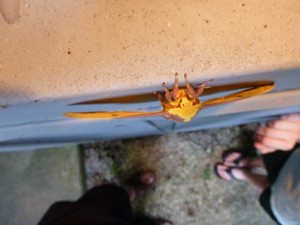
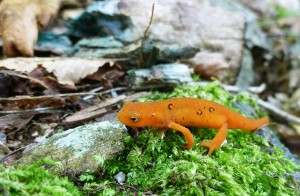
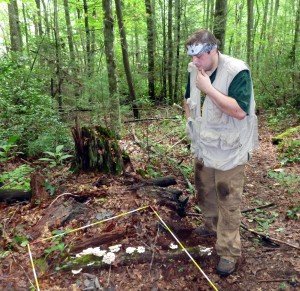
On our way out of Peaks of Otter we stopped at a location I had in my class field notes from 2006. Surprise, surprise, several Peaks of Otter salamanders with only a couple minutes of searching! I will need to get some additional permits for next year apparently.
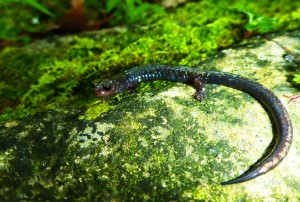
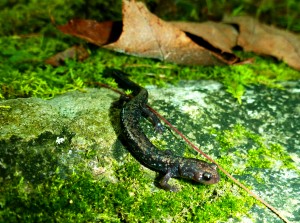
Rocky Knob was at too low of an elevation to easily find salamanders in the middle of July so we simply placed a data logger station and continued on to Cherokee National Forest, Tennessee to a location I had not been to before. We stayed at a nice quiet campsite called Backbone Rock right next to a stream . It was right next to a road but still very peaceful.
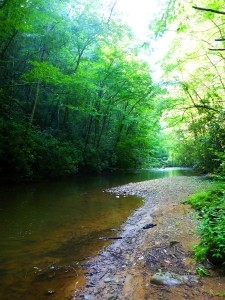
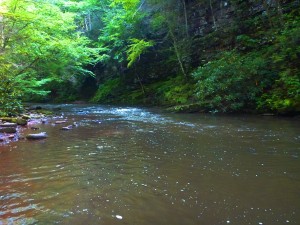
I was hoping to find Weller’s (Plethodon welleri) and Yonahlossee (Plethodon yonahlossee) salamanders in this area, but because it was the middle of July I was not disappointed when we did not find any. Next year should be much more productive as I was also able to find some known localities from researches I met on the trip. We found some common species, collected some much needed preliminary data, and saw some gorgeous mushrooms (photo taken by Kaili).
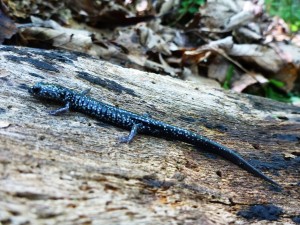
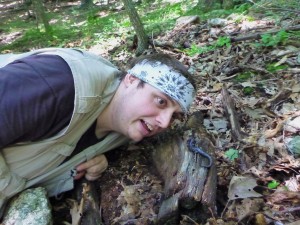
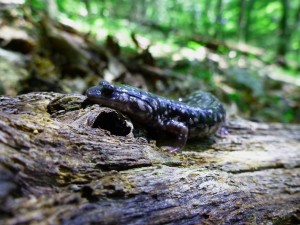
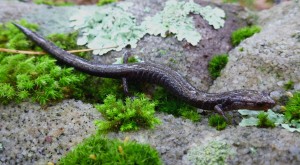
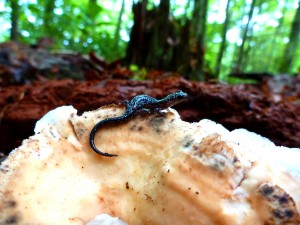
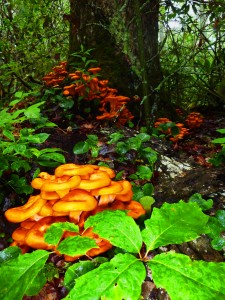
We also had a visitor stroll up on us while collecting data on Iron Ridge Trail, a big black bear! I was bent over recording soil moisture for one of the plots when my assistant Kaili noticed something down the trail. “Vinny, there’s a bear.” said in the calmest voice possible. I looked down the trail and noticed what had to be a 350+ lb bear walking into the trail and starting to head towards us. My immediate reaction, “How can I hide all this expensive equipment very quickly”. Luckily, as soon as the bear realized we were there he took off down the hill faster than I thought was physically possible. It was a nice adrenaline rush.
Next we headed to yet another area I had never been before, Pisgah National Forest in North Carolina. Unfortunately, the majority of the sites I had permission to use for research were lower elevation so I was not able to collect as much data as I would have liked. However, I was able to scout several new locations for next year at higher elevations including locations near Mt. Mitchell, the highest peak east of the Mississippi river. We found several cool species and I am very excited about working in these areas next spring. It was especially cool to see Plethodon montanus right next to Desmognathus sp..
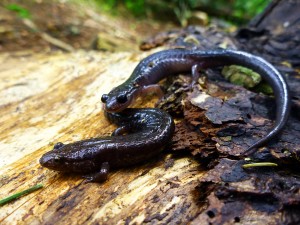
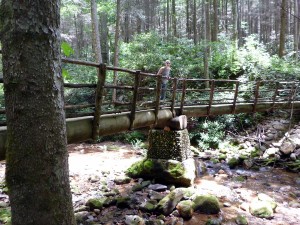
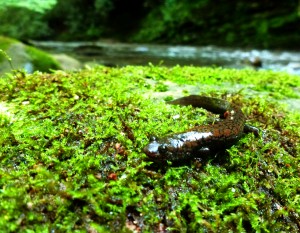
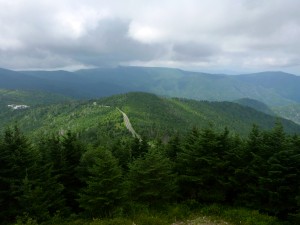
The final leg of the trip was spent back in the Great Smoky Mountains National Park. We needed to set up 4 data logger stations as well as collect as much data as possible in only 4 short days. Once again we stayed at Purchase Knob which was a great treat after a week of camping. We also saw some cool non-salamander animals such as some gorgeous butterflies on a pile of dung and a basking garter snake (Thamnophis sirtalis).
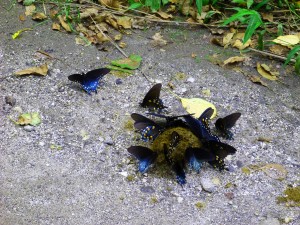
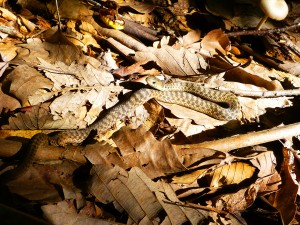
We returned to the majority of field sites that I visited earlier in the summer and found many of the same species with one additional surprise species, spring salamander (Gyrinophilus porphyriticus)! Kali flipped the spring salamander under some bark 50 feet from a stream. It was a nice change after the large quantities of small Plethodon, Eurycea, and Desmognathusspecies typically encountered (last four photos).
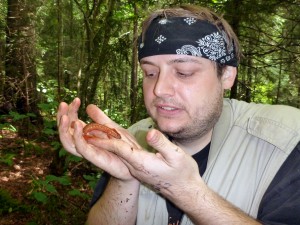
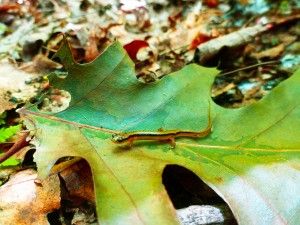
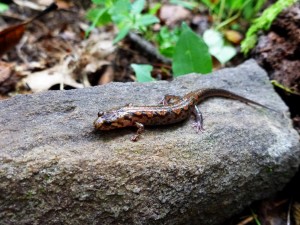
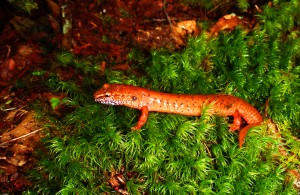
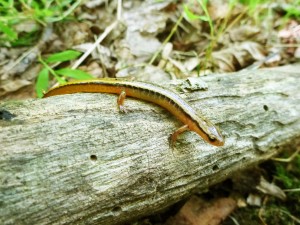
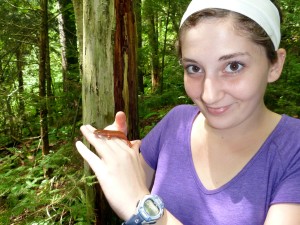
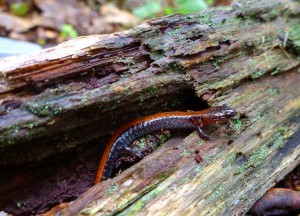
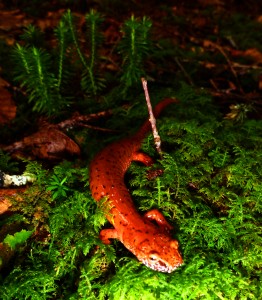
Overall this was another great trip. I was able to gather some preliminary data (not as much as I would have liked, but enough). I was also able to set up all of my data logger stations. Finally, I was able to scout new locations to ensure next year is very productive. Most importantly I was able to figure out issues with my original data collection methodology and fix a lot of minor problems. Those minor problems could have compounded and made next year a nightmare if I was not able to address them in a limited field season such as the one I had this year.
Just a few of the problems I plan on fixing before next year include getting permission to collect tissue samples to ensure correct identification of all salamanders (Desmognathus sp. can be tricky!), setting up a solar panel charging station to help with powering my equipment without requiring staying at a motel or finding an outlet to charge all my devices, obtaining more storage space for my car to keep my equipment better organized, and most importantly making adjustments to the variables I record to maximize the potential of the data I collect. I am very excited for next year all ready!
I will end this post like I ended my first field work post, with a few panorama shots from the trip.

